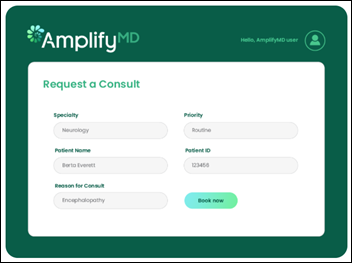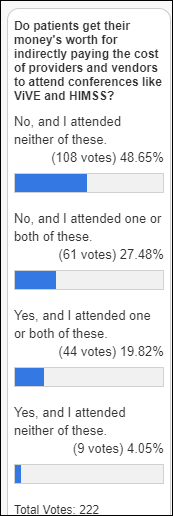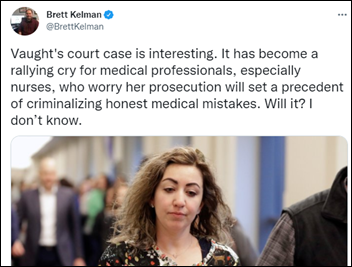The Life and Times of Dave Garets, Healthcare IT Evangelist
By Ivo Nelson
Ivo Nelson is an entrepreneur, author, and speaker of Huntsville, TX. Helping with this tribute were Mike Davis, Steve Lieber, and Phil Pead.

Dave Garets passed Monday morning at the age of 73, having battled Parkinson’s disease for several years. Dave made a huge impact on the healthcare IT industry.

It is hard to separate the man from his mission. For in Dave, he had the goodness of the human being coupled with the mission of improving healthcare. Dave believed that if technology was uniformly adopted in healthcare, then caring for patients would be greatly enhanced and outcomes would improve and become more predictable.
Two ideas formed from his healthcare IT experience. One was that the technology had to meet certain standards, because after all, healthcare IT was affecting people’s lives. The second idea was that healthcare IT had to be universally adopted to obtain the maximum benefit to society.
As a result, Dave left his mark on an industry that has now become almost entirely dependent on technology, the capture of healthcare data that is used in research to improve care outcomes and care safety, and delivering standardized care protocols to support lower cost and higher quality of care.
The early days of Dave’s exploits are told about his nightly guitar playing at local Idaho bars. He used this musical skill at several HIMSS venues over the years to create a unique identity for his presentations. Dave’s introduction to IT was developed by AT&T, where he would tell people that he used to code in assembler. Gartner analysts gave Dave the benefit of the doubt about his programming skills. Dave was an accomplished CIO for Magic Valley Hospital in Twin Falls, Idaho for several years, where he became a thorn in the side of Meditech.
He then moved on to management consulting with Arthur D. Little before joining Gartner as a VP for healthcare research and analytics. At Gartner, Dave demonstrated his executive management skills by successfully managing a group of research analysts who were highly intelligent, accomplished, and opinionated. The research and advisory team he built at Gartner is considered one of the best in healthcare.
Gartner provided the platform for Dave to truly shine. Dave loved being at the front and center of emerging healthcare technologies and regulations. He relished being on stage, presenting well thought out and defensible positions for using healthcare IT to improve healthcare. He promoted healthcare IT across the US and at international venues. Dave’s involvement with driving healthcare research provided him the platform to establish relationships with other powerful healthcare IT executives in provider, payer, and vendor organizations. Many vendor executives considered him a nuisance, especially when then did not deliver what they promised to the market.
I recruited Dave to my Healthlink consulting company to help drive consulting services for providers. Once again, Dave recruited the best and the brightest to join Healthlink during a pivotal point in the company’s growth. Under his leadership, Healthlink built one of the best strategy practices in the healthcare IT industry.
It was during his time at Healthlink that Dave was asked to be the chairman of the largest association in the healthcare industry, HIMSS, a byproduct of a merger between CHIM (healthcare IT vendors) and HIMSS (healthcare IT provider members).
Two major components of the deal struck from the CHIM-HIMSS negotiations were to change the formal membership structure to include a corporate member category (vendor companies) and to change the volunteer leadership succession in such a fashion that guaranteed that a CHIM (vendor representative) board member would become the next HIMSS chair. While this would not be the first time an employee of a vendor served as the volunteer chair of HIMSS, it would be the first time under the new membership structure.
The planned CHIM succession, which would determine who that new HIMSS chair would be, wasn’t the best approach for the organizations’ strategic objectives for the merged association. To solve this, Dave was instead elevated within CHIM leadership rotation and thus setting the stage for him to serve as HIMSS chairperson.
Dave was instrumental during his HIMSS leadership tenure in gaining widespread acceptance of the corporate community as full-fledged members of HIMSS. As both a former CIO and vendor, Dave was able to speak to both audiences and helped reinforce the strategic concept of HIMSS as a big tent, a place that was open and welcome to all points of view to get to the right answers for the American health systems and the patients they served.
It was during his term as HIMSS chair that HIMSS acquired survey research and data assets from The Dorenfest Group and set into motion a series of events that took Dave, HIMSS, and the entire health information technology sector in new directions that shaped HIT adoption trends and federal HIT policy for more than a decade.
Upon the acquisition of Dorenfest by HIMSS, a national search was conducted for the management head of the new initiative, which became HIMSS Analytics. Dave resigned as HIMSS chair and was hired to lead this group. Dave again demonstrated his executive management skills by converting a demoralized and toxic employee base into an empowered and progressive culture that generated an accurate and highly respected provider IT market database solution.
It was at HIMSS Analytics that Dave helped develop the EMR Adoption Model (EMRAM) that was used to objectively identify acute care EMR capabilities in hospitals. This model provided a simple and accurate assessment of provider EMR capabilities for supporting healthcare delivery.
In the early days, the model was challenged, and at times, maligned. Dave’s relentless promotion of the EMRAM in the US and internationally was the key factor in its market adoption, success, and impact on the EMR market and federal health policy. Much of the early dissatisfaction was how the model showed the lack of not only coherent HIT adoption, but also how the healthcare delivery system significantly lagged other business sectors in its technology adoption. The model’s enduring success proved that the thinking behind the model was right, and it ultimately became deeply connected to the US government’s efforts to spur the adoption of electronic medical records.
After achieving success with HIMSS Analytics, Dave was recruited by The Advisory Board Company to create a research and advisory service. Dave recruited several of his old Gartner team members to help create and launch it, the first at the Advisory Board to be completely electronic in format, replacing an outdated and expensive paper publishing research service. Dave also helped promote new consulting services for the company related to Meaningful Use regulations and the emerging ICD-10 coding system.
Dave retired from the Advisory Board, almost. He continued to take on consulting projects that kept him busy working with his wife Claire with their company ChangeGang that kept him connected to the healthcare IT market.
Dave helped drive healthcare IT advancements that resulted in considerable improvements for the market. He is irreplaceable in his zest for driving healthcare IT to enable higher levels of high-quality healthcare services. He created and developed strong corporate teams, he played the politics necessary to keep his team from experiencing corporate disruptions, he was the chair of HIMSS and participated in CHIME’s CIO boot camp training curriculum for several years, and he mentored his teams that generated several successful IT professionals.
Dave lived life large. He once owned three yachts at the same time (not on purpose). He traveled globally and immersed himself in the local cultures. He always had a well-stocked wine cellar that he gladly shared with friends. He married Claire, who was his intellectual match and had the character to keep him on his toes.
Dave slid into the home plate of life with a torn uniform, dirt on his face, bleeding, and missing a few teeth on March 28, 2022. But what a ride he had.
May God bless him and welcome him into heaven.

















































The $50 billion Rural Health payout is welcome. In context, it's less than the total cost of the F22 raptor…